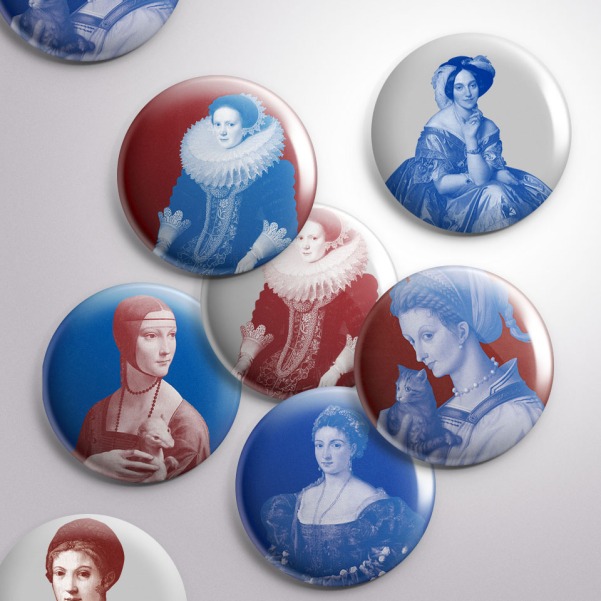A campaign event inspired by Renaissance women.
The women of the Renaissance, like women of the Middle Ages, were denied all political rights and considered legally subject to their husbands. Women of all classes were expected to perform, first and foremost, the duties of housewife. Women who did not marry were not permitted to live independently. Instead, they lived in the households of their male relatives or, more often, joined a convent.
The theme of the life of a Renaissance woman was subjugation. A woman was controlled by her parents throughout her childhood, and then handed directly into the hands of a husband, whom she most likely had not chosen herself, and who would exercise control over her until her death or his. Only women of the highest class were given the chance to distinguish themselves, and this only rarely.
Can you find the cat?





Isabella d’Este was one of the strongest, most intelligent woman of the Renaissance period. She mastered Greek and Latin and memorized the works of the ancient scholars. She frequently gave public performances, in which she demonstrated her skill at singing, dancing, and playing musical instruments. Isabella exerted a great amount of influence over the Mantua court, and it was due in great part to her presence that Mantua became known as a major center of wit, elegance, and artistic genius. After her husband, the duke, was captured in battle, she ruled Mantua herself.
Sofonisba Anguissola is one of the few female Renaissance artists who has received global recognition for her contribution to art. She was known to have traveled around Italy—even earning praise from Michelangelo—before arriving at the Spanish Court, where she painted portraits of King Philip II and his family. Anguissola’s technically advanced paintings didn’t just push boundaries within the genre of portraiture; they attacked Renaissance conventions of the “woman as object.”
Lavinia Fontana found fame in advancing portraiture techniques by cleverly slipping symbolic still life objects into her paintings. Not only did this technique exhibit her considerable artistic skills, it gave spectators insight into her intellectual, rarified way of living.
Artemisia Gentileschi had a career that spanned 40 years. Her canvases were never timid. Scholars argued it was “hard to believe” a woman was behind her canvases, though her portrayals of biblical and Roman heroines were seemingly unlikely to have been painted by a man. Her determined, psychologically advanced depictions of Judith and Lucretia were embedded with stunning lighting effects à la Caravaggio.
